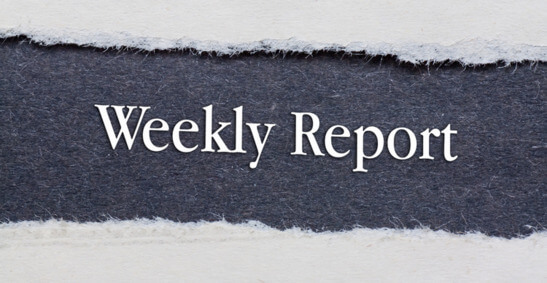Understanding the Importance of Email Design
Before diving into design strategies, it’s essential to understand why email design is so vital. The design of your email impacts several key factors:
- First Impressions: The design is often the first thing recipients notice. A well-designed email grabs attention and sets a positive tone.
- Readability: Good design ensures that your content is easy to read and understand, increasing the likelihood that recipients will engage with your message.
- Call-to-Action (CTA): Design can significantly influence how effectively your CTAs are presented and, consequently, how many people take the desired action.
Key Principles of Effective Email Design
Keep It Simple
Simplicity is crucial in email design. Overly complex designs can overwhelm recipients and detract from your message. Here’s how to keep it simple:
- Minimalist Layout: Use a clean, uncluttered layout with ample white space. This makes it easier for recipients to focus on the content.
- Concise Content: Avoid long paragraphs. Use bullet points and short sentences to make your message easy to scan.
Prioritize Mobile Optimization
With a significant portion of emails being opened on mobile devices, mobile optimization is a must. To ensure your emails look great on all devices:
- Responsive Design: Use a responsive email template that adjusts to different screen sizes. This ensures that your email is readable on both desktop and mobile devices.
- Test Across Devices: Before sending, test your email on various devices and email clients to ensure it appears as intended.
Use a Consistent Brand Style
Consistency in branding helps build trust and recognition. Ensure your email design reflects your brand’s identity:
- Brand Colors and Fonts: Use your brand’s colors and fonts to maintain a cohesive look. This reinforces brand recognition and consistency.
- Logo Placement: Include your logo in a prominent position to ensure it’s immediately visible.
Create a Strong Visual Hierarchy
A well-structured visual hierarchy guides recipients through your email and highlights key elements:
- Headings and Subheadings: Use clear and descriptive headings to break up content and make it easier to navigate.
- Contrast and Color: Utilize contrast and color to draw attention to important elements, such as CTAs or special offers.
Incorporate Engaging Visuals
Visuals can make your emails more engaging and memorable:
- High-Quality Images: Use high-resolution images that are relevant to your content. Avoid using generic stock photos that may not resonate with your audience.
- Infographics and Videos: Incorporate infographics or videos to provide additional value and engage your audience.
Best Practices for Email Design
Craft Compelling Subject Lines
The subject line is the first thing recipients see, and it greatly influences open rates:
- Keep It Short and Sweet: Aim for 50-60 characters to ensure it displays well on all devices.
- Be Clear and Specific: Clearly convey the value of the email content to entice recipients to open it.
Design for Readability
Ensure your email is easy to read by:
- Using Legible Fonts: Choose fonts that are easy to read on all devices. Stick to web-safe fonts for consistency.
- Optimizing Font Size: Use a font size that’s large enough to read comfortably, typically 14-16 pixels for body text.
Optimize CTAs
Your CTAs should be easy to find and compelling:
- Use Actionable Language: Phrases like “Shop Now,” “Learn More,” or “Get Started” are more effective than generic terms like “Click Here.”
- Ensure Prominent Placement: Place CTAs in strategic locations, such as near the top of the email or following a compelling section of content.
Include Personalization Elements
Personalization can increase engagement and conversion rates:
- Personalized Greetings: Use the recipient’s name or other personalized elements in the email content.
- Dynamic Content: Tailor content based on recipient preferences or past behavior to make the email more relevant.
Test and Analyze
Regular testing and analysis help refine your email design strategy:
- A/B Testing: Test different design elements, such as subject lines, images, and CTAs, to see what resonates best with your audience.
- Analyze Metrics: Monitor key metrics like open rates, click-through rates, and conversion rates to gauge the effectiveness of your design.
Advanced Design Techniques
Use Interactive Elements
Interactive elements can make your emails more engaging:
- Gifs and Animations: Use animated gifs to draw attention to specific elements or create a dynamic experience.
- Interactive Forms and Surveys: Incorporate interactive elements like surveys or forms to encourage engagement and gather feedback.
Implement Progressive Disclosure
Progressive disclosure helps manage information overload:
- Accordion Sections: Use expandable sections to allow recipients to view more information if they’re interested.
- Read More Links: Include links that direct recipients to your website for more detailed content.
Incorporate Microinteractions
Microinteractions add subtle touches to enhance user experience:
- Hover Effects: Use hover effects on buttons or images to provide visual feedback.
- Feedback Messages: Include messages that acknowledge user actions, such as a confirmation after clicking a CTA.
Effective email design is a powerful tool for improving your email performance. By focusing on simplicity, mobile optimization, consistent branding, visual hierarchy, and engaging visuals, you can create emails that not only capture attention but also drive action. Additionally, adhering to best practices, personalizing content, and employing advanced design techniques can further enhance your email campaigns.
Remember, the key to successful email design is continuous testing and refinement. By analyzing performance metrics and experimenting with different design elements, you can fine-tune your approach and achieve better results over time. Embrace the art and science of email design, and watch your email performance soar.
Frequently Asked Questions (FAQ)
1. What is the most important aspect of email design for improving performance?
The most important aspect of email design is creating a visually appealing and user-friendly layout. This includes having a clean, uncluttered design, ensuring mobile optimization, using consistent branding, and having a clear visual hierarchy. These factors help capture attention, make content easily readable, and guide recipients toward taking the desired action.
2. How can I make sure my email design is mobile-friendly?
To ensure your email design is mobile-friendly, use responsive email templates that automatically adjust to different screen sizes. Test your emails on various devices and email clients to check their appearance and functionality. Additionally, use larger fonts and buttons to enhance readability and ease of interaction on smaller screens.
3. What are some effective ways to increase email open rates through design?
To increase open rates, focus on crafting compelling subject lines that are clear and enticing. Use a clean and recognizable sender name and ensure your email design is visually appealing from the moment it’s previewed in the inbox. Additionally, personalizing subject lines and preheaders can also help grab the recipient's attention.
4. How can I improve the readability of my email content?
Improve readability by using a clear, legible font and a font size that’s easy to read on all devices (typically 14-16 pixels for body text). Break up text with headings, bullet points, and short paragraphs to make it scannable. Use ample white space to prevent the email from feeling cluttered.
5. What role do CTAs play in email design, and how can I make them more effective?
CTAs (Call-to-Actions) are crucial for guiding recipients towards the desired action, such as making a purchase or signing up for a webinar. Make your CTAs prominent by using contrasting colors and actionable language. Place them strategically within the email and ensure they are large enough to be easily clickable on both desktop and mobile devices.
6. How can personalization enhance email design and performance?
Personalization enhances email design and performance by making the content more relevant to each recipient. Use personalized greetings, and tailor content based on the recipient’s past behavior or preferences. This approach helps create a more engaging experience and can lead to higher open rates and conversions.
7. What are some best practices for A/B testing email designs?
When A/B testing email designs, test one element at a time (such as subject lines, images, or CTA placement) to accurately determine what influences performance. Use a sufficient sample size to ensure reliable results, and analyze metrics such as open rates, click-through rates, and conversions to evaluate effectiveness.
8. Can interactive elements in emails improve engagement?
Yes, interactive elements can significantly improve engagement. Features like animated gifs, interactive forms, and hover effects can make your emails more dynamic and engaging. These elements encourage recipients to interact with the content, potentially leading to higher click-through rates and improved user experience.
9. How often should I update my email design strategy?
Regularly review and update your email design strategy based on performance metrics and feedback. Trends and technologies evolve, so it's important to stay current with best practices and design innovations. Quarterly or bi-annual reviews can help you identify areas for improvement and keep your email campaigns fresh and effective.
10. Where can I find inspiration for email design?
Inspiration for email design can be found through various sources, including:
- Design Galleries: Websites like Behance or Dribbble showcase creative email designs.
- Competitor Emails: Analyze emails from competitors or industry leaders to see what’s effective.
- Email Marketing Platforms: Many platforms offer design resources, templates, and examples.
Get in Touch
Website – https://www.webinfomatrix.com
Mobile - +91 9212306116
Whatsapp – https://call.whatsapp.com/voice/9rqVJyqSNMhpdFkKPZGYKj
Skype – shalabh.mishra
Telegram – shalabhmishra
Email - info@webinfomatrix.com









 English (US) ·
English (US) ·